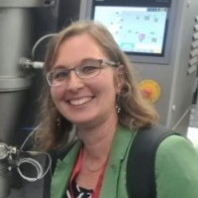Artificial Engineered Minerals: Synthesis, Characterization, Metallurgical and Mechanical Processing
A special issue of Minerals (ISSN 2075-163X). This special issue belongs to the section "Mineral Processing and Extractive Metallurgy".
Deadline for manuscript submissions: 31 October 2024 | Viewed by 2477
Special Issue Editors
Interests: mechanical separation processes; solid liquid separation; recycling and mineral processing; particle-particle interactions; particle characterization
Special Issues, Collections and Topics in MDPI journals
Interests: pyrometallurgy; process technology; metals; recycling; purification; alloying; WEEE; spent batteries; critical materials; circular economy; electrometallurgy
Special Issues, Collections and Topics in MDPI journals
Interests: elemental and element species determination; materials analysis; phase separation
Special Issue Information
Dear Colleagues,
We are led to believe in the high and sustainable recycling rates of consumer products; however, the recycling industry primarily focuses on recovering the main bulk materials. This oversight results in the under-recognition and loss of metals essential for advanced technological functions in waste streams, such as Ta and Li incorporated into building materials, Nd and Dy dissolved in iron-based construction materials, and Pd dispersed as dust across various process streams. Consequently, this leads to downcycling and the depletion of valuable chemical species. To address this issue, the future circular economy (CE) must develop processing technologies that maximize the recovery of all 60 different elements utilized in our technical society’s products.
The ongoing developments in materials and the increased functionality of technical products, exemplified by the complexity of materials in e-mobility, necessitate the tracing of all relevant chemical elements through mechanical and metallurgical recycling processes. This tracking enables closing of material streams and identifies the whereabouts of each element within the cycle. A novel technological concept, Engineered Artificial Minerals (EnAM), allows for the selective concentration and retrieval of specific elements from small-scale components and multi-material composites. The EnAM concept involves tailored development and application of thermodynamic and crystallization research to generate EnAM-crystals during pyrometallurgical processing, and it furthermore evaluates the mechanical steps for downstream processing. Thus, the concentration of a target species involves a two-stage process: first, during the pyrometallurgical treatment, the target element is integrated into a specific artificial mineral phase, representing in most cases only a small fraction of the entire slag; second, the liberation and separation of this artificial mineral as particles from the overall slag stream. The key methods for understanding and quantifying these processes, as well as tracing individual elements, include in situ monitoring of the formation processes and multidimensional analysis of the solid EnAM structure/texture at each process stage.
In terms of a holistic picture, we have to apply an integrated model and simulation approach, as well as develop and utilize new process models leading to digital twins of the related processes. This also necessitates the development of an enhanced entropy concept to quantitatively describe the mixture and inner structure of the material flows. This approach integrates both the particle and thermochemical processes of metallurgy into a single digital tool. It serves as a method to estimate the recycling effort for each chemical element in each material, coupling to economic, ecological, and life-cycle assessment models to allow for predictive simulations to determine the most efficient and feasible recycling concept for each element or feed stream.
Prof. Dr. Urs Alexander Peuker
Prof. Dr. Bernd Friedrich
Prof. Dr. Ursula Elisabeth Adriane Fittschen
Prof. Dr. Sandra Breitung-Faes
Guest Editors
Manuscript Submission Information
Manuscripts should be submitted online at www.mdpi.com by registering and logging in to this website. Once you are registered, click here to go to the submission form. Manuscripts can be submitted until the deadline. All submissions that pass pre-check are peer-reviewed. Accepted papers will be published continuously in the journal (as soon as accepted) and will be listed together on the special issue website. Research articles, review articles as well as short communications are invited. For planned papers, a title and short abstract (about 100 words) can be sent to the Editorial Office for announcement on this website.
Submitted manuscripts should not have been published previously, nor be under consideration for publication elsewhere (except conference proceedings papers). All manuscripts are thoroughly refereed through a single-blind peer-review process. A guide for authors and other relevant information for submission of manuscripts is available on the Instructions for Authors page. Minerals is an international peer-reviewed open access monthly journal published by MDPI.
Please visit the Instructions for Authors page before submitting a manuscript. The Article Processing Charge (APC) for publication in this open access journal is 2400 CHF (Swiss Francs). Submitted papers should be well formatted and use good English. Authors may use MDPI's English editing service prior to publication or during author revisions.
Keywords
- metallurgical recycling
- pyrometallurgy
- mineral processing
- grain size distribution
- crushing, milling, breakage and liberation
- mechanical sorting
- flotation, magnetic separation, density separation, electrostatic separation
- flow sheet simulation
- DEM-modelling and simulation
- thermodynamic modelling and simulation
- phase equilibrium and crystallization
- metallurgical slags
- Controlled Solidification
- e-waste and spent batteries








